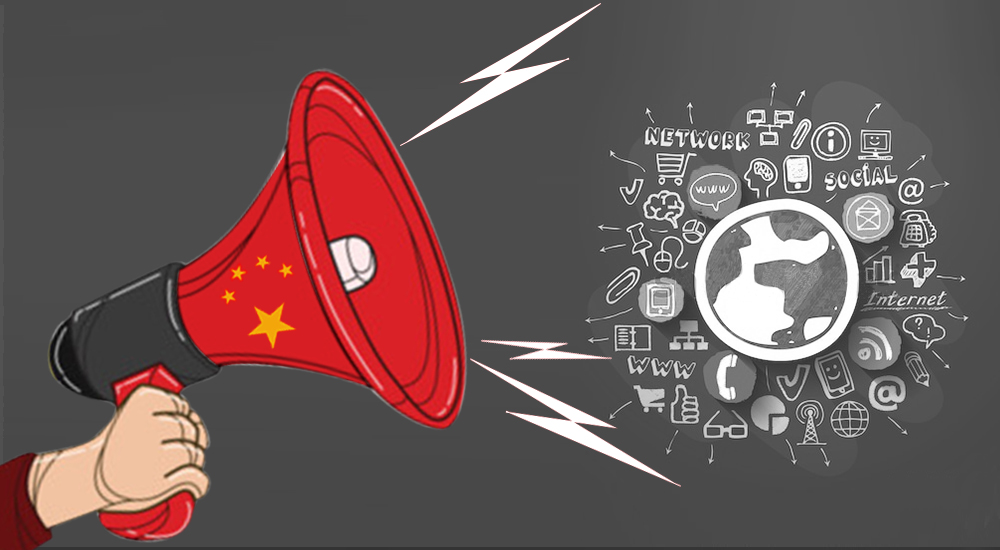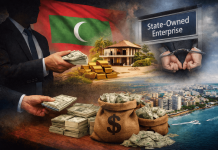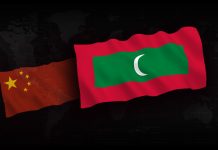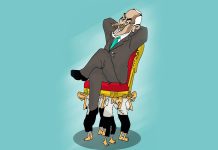China has been actively developing and mounting its own information campaigns in an attempt to shape global narratives . Such narratives are not only propagated through official channels and traditional state media propaganda including what have come to be known as “wolf warrior” style diplomats but also amplified through the manipulation of social media platforms. Especially in response to recent crises such as the COVID-19 pandemic and the Hong Kong protests .
At the same time, China’s choice of tactics has varied across regions and countries. In Southeast Asia, Beijing has focused on striking a cooperative tone and highlighting China’s positive image. Chinese state media coverage emphasized Association of Southeast Asian Nations (ASEAN) solidarity and cooperation with China in fighting the virus, as well as Southeast Asian leaders’expressions of confidence in the Chinese government’s ability to control the outbreak. Additionally, in line with Beijing’s widespread touting of its mask diplomacy, Southeast Asian countries were presented as examples of China’s largesse.
Unsurprisingly, social media platforms have become an important part of the information propagation toolkit. For example, the Chinese embassy in Manila is relatively active on Twitter. In addition to rebutting U.S. policies toward China, it has spotlighted Beijing’s continued medical assistance to the Philippines, and trumpeted President Rodrigo Duterte’s plea to Xi Jinping for the Philippines to gain priority access to a COVID-19 vaccine (and Manila’s subsequent gratitude). Similarly, the Chinese embassy in Bangkok publicized on its Facebook page additional deliveries of medical supplies and personal protective equipment to Thailand in May and June.
In addition to highlighting Beijing’s generosity, embedded in this public narrative is a subtext of expected reciprocity. That is, countries who received assistance were reaping the rewards from their initial and continued support of China. Official statements were often explicit. The Chinese ambassador to Manila described “unity and partnership” to “ reciprocate the Philippines’ help,” while China’s foreign ministry stated that “we will reciprocate [Malaysia’s] kindness without any hesitation.” Moreover, Chinese diplomats reacted strongly to any criticism of China’s medical assistance. When the Philippines suggested that some test kits were low in accuracy,the Chinese embassy described the comments as irresponsible and antithetical to cooperation, prompting Manila to apologize.
Foreign audiences have not been the only target of China’s informational diplomacy. In many cases, Chinese official messaging has also focused on the diaspora. As one example, China’s ambassador to Singapore met with Chinese university and high school students to provide reassurance, local Chinese business organizations were enlisted for outreach, and the Chinese embassy distributed masks to its citizens in Singapore. In the Philippines, a group of Filipino Chinese cultural and business associations donated over $2 million of medical supplies while coordinating with the Chinese embassy in Manila for further assistance. Arguably, these strategies have helped to reinforce the narrative of a competent Chinese Communist Party among the overseas Chinese populations, particularly as their countries seem to struggle with the virus. This highlights the longstanding importance Beijing places on attempting to maintain influence over diaspora communities.
Narratives about China’s mask diplomacy have also propagated on social media outside of official channels, sometimes leading to the spread of misinformation. One example involved a photo of China’s ambassador to Malaysia and senior Malaysian officials with donated medical supplies from China, originally posted on Facebook by the Chinese embassy in Kuala Lumpur. The same photo was reposted on Facebook and Twitter, by accounts apparently belonging to netizens, claiming that Chinese doctors had been sent to Malaysia to help fight the coronavirus (a team of Chinese experts did come to Malaysia the following month).
Perhaps unsurprisingly, Beijing’s promotion of its own information narratives can be too heavy-handed, provoking local pushback. When China’s embassy in Manila released a music video on Facebook titled “One Sea,” seen as a clumsy attempt to negate Philippine territorial claims in the South China Sea, it quickly garnered over a hundred thousand dislikes. After Chinese netizens attacked Thai celebrities for sharing posts about the potential origins of COVID-19 in a Chinese laboratory and suggesting Hong Kong and Taiwanese independence, netizens in Thailand quickly formed a pro-democracy “Milk Tea alliance” with other activists from Taiwan and Hong Kong.
Relative to more overt disinformation efforts and wolf warrior tactics it has undertaken in Europe and the United States, however, China’s informational diplomacy in Southeast Asia appears to have focused largely on promoting the notion of a benevolent Beijing. This could be related to the already greater receptivity of many Southeast Asian countries, which have largely avoided open criticism and instead chosen to highlight the positive aspects of China’s policy responses to COVID-19. Many Southeast Asian countries have preferred to remain on the receiving end of Chinese assistance rather than Chinese vitriol. Beijing’s emphasis on public gratitude and reciprocity is likely to only further incentivize these countries to err on China’s good side. Arguably, neither is it in Beijing’s interests to further alienate its smaller neighbors, especially as it continues to pursue more antagonistic policies elsewhere.
China has been actively developing and mounting its own information campaigns in an attempt to shape global narratives . Such narratives are not only propagated through official channels and traditional state media propaganda including what have come to be known as “wolf warrior” style diplomats but also amplified through the manipulation of social media platforms. Especially in response to recent crises such as the COVID-19 pandemic and the Hong Kong protests .
At the same time, China’s choice of tactics has varied across regions and countries. In Southeast Asia, Beijing has focused on striking a cooperative tone and highlighting China’s positive image. This contrasts with its highly aggressive information operations toward the United States and Europe. Chinese state media coverage emphasized Association of Southeast Asian Nations (ASEAN) solidarity and cooperation with China in fighting the virus, as well as Southeast Asian leaders’expressions of confidence in the Chinese government’s ability to control the outbreak. Additionally, in line with Beijing’s widespread touting of its mask diplomacy, Southeast Asian countries were presented as examples of China’s largesse.
Unsurprisingly, social media platforms have become an important part of the information propagation toolkit. For example, the Chinese embassy in Manila is relatively active on Twitter. In addition to rebutting U.S. policies toward China, it has spotlighted Beijing’s continued medical assistance to the Philippines, and trumpeted President Rodrigo Duterte’s plea to Xi Jinping for the Philippines to gain priority access to a COVID-19 vaccine (and Manila’s subsequent gratitude). Similarly, the Chinese embassy in Bangkok publicized on its Facebook page additional deliveries of medical supplies and personal protective equipment to Thailand in May and June.
In addition to highlighting Beijing’s generosity, embedded in this public narrative is a subtext of expected reciprocity. That is, countries who received assistance were reaping the rewards from their initial and continued support of China. Official statements were often explicit. The Chinese ambassador to Manila described “unity and partnership” to “ reciprocate the Philippines’ help,” while China’s foreign ministry stated that “we will reciprocate [Malaysia’s] kindness without any hesitation.” Moreover, Chinese diplomats reacted strongly to any criticism of China’s medical assistance. When the Philippines suggested that some test kits were low in accuracy,the Chinese embassy described the comments as irresponsible and antithetical to cooperation, prompting Manila to apologize.
Foreign audiences have not been the only target of China’s informational diplomacy. In many cases, Chinese official messaging has also focused on the diaspora. As one example, China’s ambassador to Singapore met with Chinese university and high school students to provide reassurance, local Chinese business organizations were enlisted for outreach, and the Chinese embassy distributed masks to its citizens in Singapore. In the Philippines, a group of Filipino Chinese cultural and business associations donated over $2 million of medical supplies while coordinating with the Chinese embassy in Manila for further assistance. Arguably, these strategies have helped to reinforce the narrative of a competent Chinese Communist Party among the overseas Chinese populations, particularly as their countries seem to struggle with the virus. This highlights the longstanding importance Beijing places on attempting to maintain influence over diaspora communities.
Narratives about China’s mask diplomacy have also propagated on social media outside of official channels, sometimes leading to the spread of misinformation. One example involved a photo of China’s ambassador to Malaysia and senior Malaysian officials with donated medical supplies from China, originally posted on Facebook by the Chinese embassy in Kuala Lumpur. The same photo was reposted on Facebook and Twitter, by accounts apparently belonging to netizens, claiming that Chinese doctors had been sent to Malaysia to help fight the coronavirus (a team of Chinese experts did come to Malaysia the following month).
Perhaps unsurprisingly, Beijing’s promotion of its own information narratives can be too heavy-handed, provoking local pushback. When China’s embassy in Manila released a music video on Facebook titled “One Sea,” seen as a clumsy attempt to negate Philippine territorial claims in the South China Sea, it quickly garnered over a hundred thousand dislikes. After Chinese netizens attacked Thai celebrities for sharing posts about the potential origins of COVID-19 in a Chinese laboratory and suggesting Hong Kong and Taiwanese independence, netizens in Thailand quickly formed a pro-democracy “Milk Tea alliance” with other activists from Taiwan and Hong Kong.
Relative to more overt disinformation efforts and wolf warrior tactics it has undertaken in Europe and the United States, however, China’s informational diplomacy in Southeast Asia appears to have focused largely on promoting the notion of a benevolent Beijing. This could be related to the already greater receptivity of many Southeast Asian countries, which have largely avoided open criticism and instead chosen to highlight the positive aspects of China’s policy responses to COVID-19. Many Southeast Asian countries have preferred to remain on the receiving end of Chinese assistance rather than Chinese vitriol. Beijing’s emphasis on public gratitude and reciprocity is likely to only further incentivize these countries to err on China’s good side. Arguably, neither is it in Beijing’s interests to further alienate its smaller neighbors, especially as it continues to pursue more antagonistic policies elsewhere.


















